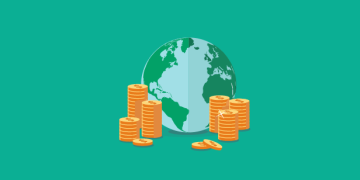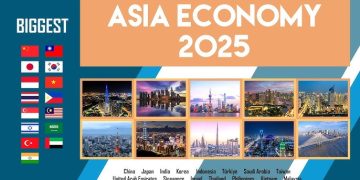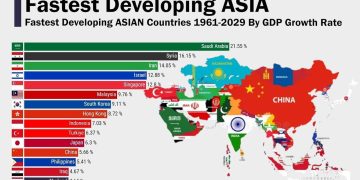Introduction
Europe stands at a defining crossroads. Once the global leader in environmental policy and climate diplomacy, the continent now faces a growing dilemma — how to maintain its green ambitions without sacrificing industrial competitiveness and energy security.
As the European Green Deal enters its implementation phase, the twin goals of decarbonization and economic vitality have come into sharp tension. Policymakers must now reconcile bold climate targets with the economic realities of a post-crisis Europe: sluggish growth, high energy costs, and fierce global competition, especially from the U.S. and China.
The question is no longer whether Europe should go green — it’s how to do so without hollowing out its industrial base.
1. The Green Deal: A Vision Meets Reality
When the European Commission launched the Green Deal in 2019, it framed it as Europe’s “new growth strategy.” The aim was both moral and economic: to make Europe the first climate-neutral continent by 2050 while modernizing its industries.
Five years later, that vision faces new headwinds. The pandemic, the Ukraine war, and global inflation have strained public budgets and disrupted supply chains for key green technologies — from solar panels to electric vehicle batteries.
Europe’s clean energy transition is now colliding with a harsher economic landscape. High interest rates have increased financing costs for renewable projects, while energy price volatility has exposed vulnerabilities in Europe’s dependence on imported gas and raw materials.
Still, the Green Deal remains the EU’s most ambitious economic project since the creation of the single market. Its success — or failure — will shape Europe’s global relevance in the decades ahead.
2. The Energy Transition: Progress and Pain
Europe’s energy transformation is central to its green strategy, but progress has been uneven.
Renewable energy generation reached a record 44% of EU electricity in 2024, with wind and solar leading the charge. However, the pace of expansion has slowed in 2025 as supply chain disruptions, rising material costs, and permitting delays weigh on new projects.
The phase-out of fossil fuels — particularly coal and natural gas — has proven politically contentious. Germany’s energy transition (Energiewende) is emblematic of this struggle: while coal use has declined, reliance on imported LNG has surged, keeping energy prices among the highest in the world.
Meanwhile, France’s nuclear renaissance, Poland’s coal lobbying, and Italy’s cautious renewables rollout illustrate the diversity — and division — within Europe’s approach.
In short: Europe has the vision, but not yet the cohesion.
3. Industrial Competitiveness: The New Challenge
Green transition policies have created a paradox: while they aim to stimulate innovation, they also impose new costs on industry.
Europe’s carbon pricing system (ETS), a global benchmark, has driven emissions down but increased energy costs for manufacturers. Coupled with stricter environmental regulations and higher financing expenses, Europe’s industrial competitiveness has eroded relative to the U.S. and Asia.
The U.S. Inflation Reduction Act (IRA), offering massive green subsidies, has lured European firms to relocate across the Atlantic. Companies in batteries, solar, and hydrogen sectors now face a tough choice: stay in Europe and bear higher costs, or shift production to markets with friendlier incentives.
This has ignited debate within the EU over the need for a “Made in Europe Act” — a unified strategy to counter foreign subsidies and retain industrial capacity. The European Investment Bank (EIB) is already expanding its green financing programs, but critics argue that the scale remains insufficient compared to American or Chinese industrial policy.
4. Green Finance and Investment Flows
The future of Europe’s transition depends heavily on green finance.
The EU’s Sustainable Finance Taxonomy was designed to classify and guide investment toward environmentally sustainable activities. While its intent was transparency, in practice it has added regulatory complexity and uncertainty — particularly for investors unsure which projects qualify as “green.”
By 2025, total ESG (Environmental, Social, Governance) assets in Europe exceeded €14 trillion, but growth has plateaued as rising interest rates reduce the appeal of long-term sustainable investments. Moreover, investors are increasingly scrutinizing “greenwashing” — exaggerated claims of environmental benefit without tangible impact.
To regain momentum, Europe must streamline its green finance framework and restore investor confidence, ensuring that sustainability and profitability are not perceived as opposites.

5. The Labor Dimension: Skills, Jobs, and Equity
A truly sustainable transition cannot ignore its human side.
The European Commission estimates that the green economy could create up to 1 million new jobs by 2030, but only if workers are retrained and industries restructured efficiently. Yet, job losses in traditional sectors — especially fossil fuel and heavy industry — continue to outpace retraining efforts in many regions.
Countries in Eastern Europe, dependent on carbon-intensive industries, face acute challenges. Without effective transition funds and social support mechanisms, the Green Deal risks deepening regional inequalities within the EU.
The Just Transition Mechanism, worth over €55 billion, is meant to cushion this impact — but implementation remains slow, and local governments often lack the capacity to deploy funds efficiently.
6. Technology and Innovation: Europe’s Competitive Edge?
Europe’s innovation ecosystem remains a mixed picture.
On one hand, European firms lead in wind turbine design, hydrogen electrolysis, and circular economy solutions. On the other, the continent lags in battery manufacturing, electric vehicles, and semiconductor production — all critical for the green transition.
Digitalization and automation, essential for energy efficiency, also reveal Europe’s technological dependency on the U.S. and East Asia. This dependency poses both economic and strategic risks, particularly as data and energy infrastructure become geopolitically sensitive assets.
The European Commission’s Net-Zero Industry Act (NZIA), introduced in 2024, aims to reverse this trend by fostering homegrown clean-tech industries. However, success will depend on whether the EU can balance environmental ambition with a realistic industrial policy.
7. The Global Context: Climate Leadership Under Pressure
Europe once prided itself as the world’s climate leader, but that status is being tested.
Emerging economies now drive most global emissions growth, and their priority remains development, not decarbonization. As Europe imposes its Carbon Border Adjustment Mechanism (CBAM) — effectively a carbon tariff on imports — developing countries accuse it of “green protectionism.”
Meanwhile, the U.S. and China are racing ahead in industrial-scale green tech, using aggressive subsidies that the EU can hardly match under current state aid rules.
The result: Europe risks becoming a regulatory superpower but an industrial underperformer — setting the rules but losing the race.
8. Political and Social Resistance
Europe’s green transformation is increasingly a political fault line.
Protests against energy prices, climate taxes, and agricultural reforms have erupted across multiple countries — from French farmers to German commuters. Populist parties have seized on the narrative that the green agenda benefits elites while hurting ordinary citizens.
This resistance threatens to slow or even reverse progress. The upcoming 2025 European Parliament elections are widely viewed as a referendum on the Green Deal’s legitimacy. Policymakers must now reframe the transition as not just a climate necessity, but an opportunity for economic renewal and social inclusion.
9. The Path Forward: Pragmatism Over Purity
For Europe, the green transition must evolve from ideological aspiration to pragmatic execution.
Key priorities for the next phase include:
- Aligning Industrial and Climate Policy – ensuring competitiveness is not sacrificed for ambition.
- Accelerating Permitting and Infrastructure – cutting bureaucracy that delays renewable deployment.
- Reforming the EU Fiscal Framework – allowing more flexibility for green investment.
- Empowering Regions and Workers – ensuring a socially just transition across all member states.
Europe’s strength has always been its capacity for consensus. In climate policy, that consensus must now shift from grand visions to grounded, actionable plans.
Conclusion
The European Green Transition remains both an economic gamble and a moral imperative. Its outcome will define Europe’s position in the 21st century — as either a pioneer of sustainable prosperity or a cautionary tale of overreach.
Balancing sustainability with competitiveness is no easy feat, but it is Europe’s only viable path forward. The continent that once rebuilt itself from war and crisis can surely reinvent itself for a green age — if it has the courage to adapt, compromise, and lead once more.































